All that ails St Martin's Island

St Martin's Island, Bangladesh's only coral bearing island, generally makes it to our timelines for its picturesque views and Instagrammable shots. During Cyclone Mocha, the nearly six sq-km island made headlines again, but not in a good way this time.
All tourists were evacuated from the island before the cyclone hit, but most residents had to stay back. There are many reasons that contribute to the island and its residents' vulnerabilities to climate change-induced natural disasters.
St Martin's Island is the smallest administrative unit (union) in Bangladesh, with a population of around 8,000-10,000. Even though so many people live here, the island lacks crucial education and healthcare facilities. Water transport is the primary mode of commute. Due to factors such as climate-related disasters, poverty, and limited employment opportunities, many people from the island migrate to other parts of the country, such as Chattogram or Dhaka.
Let's look at the factors that contribute to the island's vulnerabilities. Its location within a cyclone-prone zone, exposure to rising sea levels, fragile ecosystem, limited resources, and reliance on tourism all contribute to its susceptibility. The Bay of Bengal frequently experiences cyclones, and St Martin's falls in this cyclone-prone zone. These cyclones bring along intense winds, heavy rainfall and tidal surges, all of which pose significant threats to the island's infrastructure, economy, and inhabitants. Due to its location, only water transport is available for evacuating the residents whenever a disaster approaches, but if evacuations are not conducted as early as possible, in most cases the island inhabitants have to be left at the mercy of the elements. This was also true in the case of severe cyclonic storm Mocha, which caused huge infrastructural losses on the island. As for evacuations, a day before the storm, all local trawlers left for Teknaf. After that, owing to the danger signal at maritime ports, no trawler left the island, so even if someone wanted to evacuate, they were unable to. Many locals also said they did not know of any official modes of evacuation. Only those that could afford it, did it on their own means.
The islanders are also deeply aware of sea level rise due to climate change, which has become a major concern for the island. As global temperatures increase, melting glaciers and expanding ocean waters contribute to the gradual rise in sea levels. The island is predominantly flat and sits at an elevation of 3.6 metres above the mean sea level. So it is particularly susceptible to coastal erosion and inundation, especially during high tides and storm events. There were worries that during Cyclone Mocha, the island could get submerged.
The delicate ecosystem of St Martin's Island is yet another factor. It is home to mangrove forests and corals, and is rich in marine biodiversity. These unique ecosystems serve as natural buffers against storms and provide protection against coastal erosion. However, deforestation, habitat degradation, and overfishing can weaken these protective barriers, leaving the island more exposed to elements. Unsustainable expansion of resorts and hotels played a significant role in the degradation of keya (screw pine) trees that used to adorn the island's shoreline. Since visitors of most resorts wanted a direct view to the ocean from their rooms, the keya trees were cut down over the years.
Meanwhile, during tourist seasons, the demand for certain fish species like coral fish, rupchanda, kalachanda, sundari, flying fish, etc increases, leading to unsustainable overfishing. Plastic waste on the beach is another cause for concern. The growing tourist influx and poor waste management infrastructure has resulted in the accumulation of solid waste on the island. Lack of proper waste disposal and recycling facilities poses a threat to the environment and marine life, not to mention the overall aesthetics of the island.
Additionally, the island's dependence on fisheries and tourism as major sources of income makes the residents economically vulnerable to natural disasters. The destruction of infrastructure, boats, fishing gears, hotels, and tourist facilities during cyclones and other disasters can have long-lasting effects on the local economy, leading to loss of livelihoods and resulting in financial instability for the island's residents.
Moreover, the island's limited resources and infrastructure further amplify its vulnerability. St Martin's Island faces challenges in managing its freshwater resources. The island relies heavily on groundwater, which is vulnerable to contamination from improper sanitation practices and over-extraction. Proper management of water resources is crucial to ensure a sustainable water supply for both residents and tourists. With a small population and inadequate emergency response systems and resilient infrastructure, St Martin's Island faces challenges in effectively mitigating the impacts of natural disasters and safeguarding its inhabitants. Insufficient early warning systems, evacuation plans, and shelters hinder the island's ability to respond effectively to these hazards.
In 1999, a total of 590 hectares of area on the island was declared as an Ecologically Critical Area (ECA). In 2022, the Bangladesh government declared St Martin's Island and its adjacent areas (1,743 sq-km) as a Marine Protected Area for the conservation and sustainable management of the island resources. Recognising and addressing the island's vulnerabilities through comprehensive disaster management strategies, including early warning systems, resilient infrastructure, ecosystem conservation, and community preparedness are crucial for safeguarding the island and its inhabitants from the climate change-induced natural disasters, which threaten to become more frequent and intense.
Tazin Mahmud Ashik is an environmental science graduate, currently working in environmental research in Bangladesh.

 For all latest news, follow The Daily Star's Google News channel.
For all latest news, follow The Daily Star's Google News channel. 
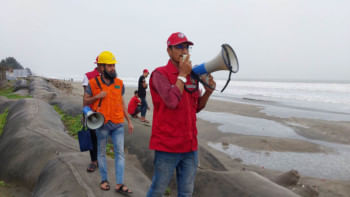



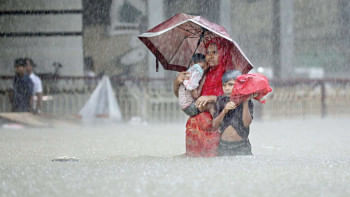
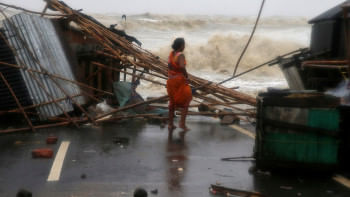



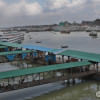
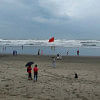
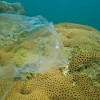


Comments